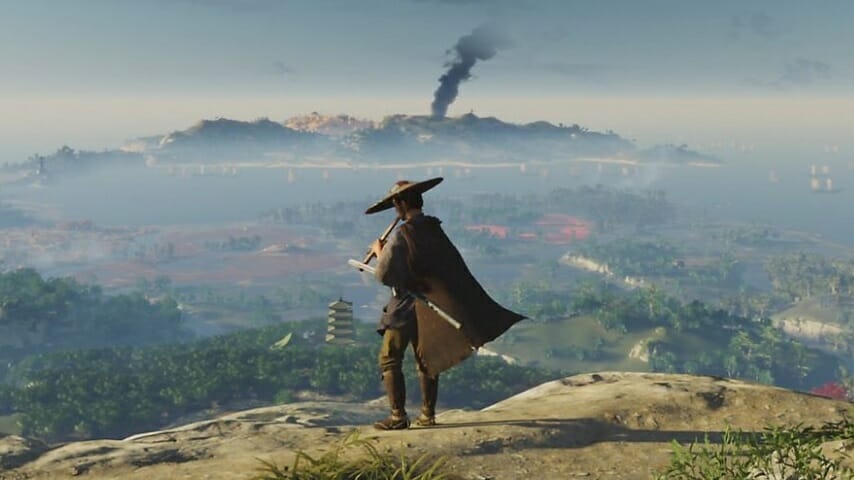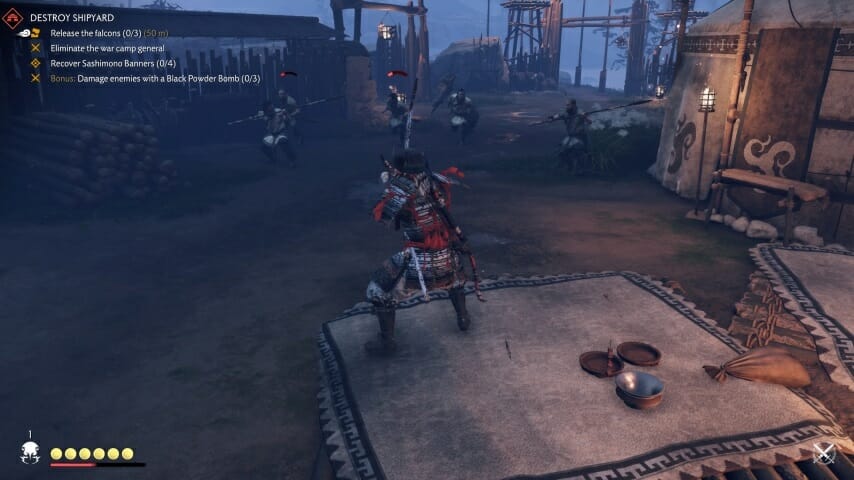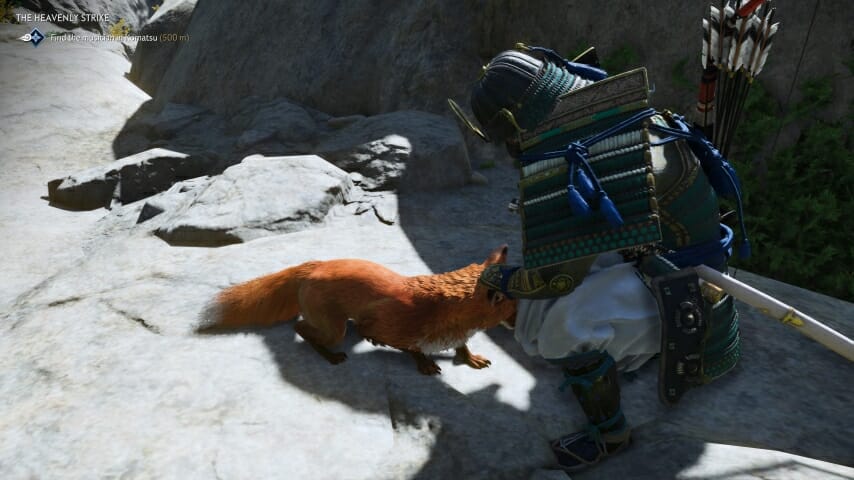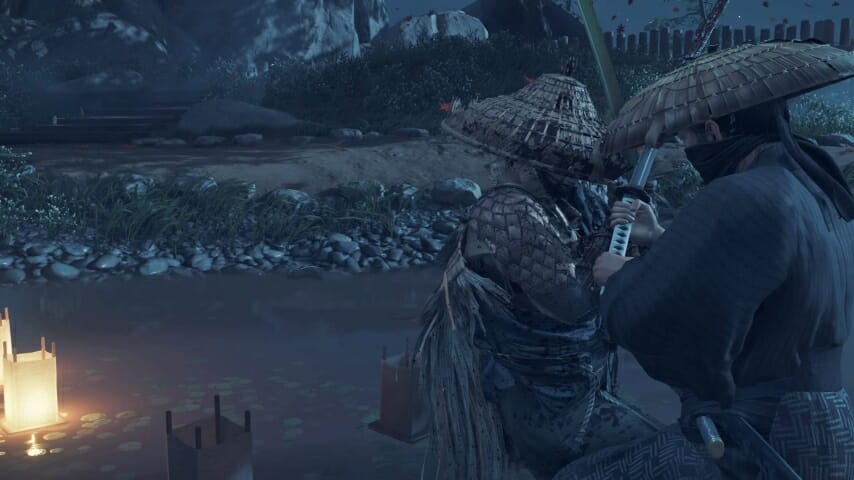10 Crucial Tips and Tricks for Ghost of Tsushima

Sucker Punch’s Ghost of Tsushima has been out for a few weeks, and although the game certainly doesn’t reinvent the wheel, it’s still full of fun objectives, beautiful environments and cute foxes. However, with such a massive world, it can start to feel a little overwhelming.
But never fear! We’re here to give you the answers to the top 10 most frequently asked questions about how to navigate the beautiful, dangerous island of Tsushima as the Ghost of Tsushima himself, Jin Sakai.
There are so many sidequests! Should I do them all?
First of all, they’re not called sidequests. They’re tales. Get it right.
Second, you should definitely do at least some. It’s by no means necessary to complete every tale to be up to snuff for the main quest, but if you’re rushing through only the main story, you’re going to miss out on a lot of cool stuff and also probably be underpowered.
Fortunately, once you discover a tale, it’ll tell you on the map what you’ll get from completing it. You’ll usually have your “legend” increased, which is basically your level, but it’ll also tell you if you get any extra materials or items. So, say, if you’re needing a bit more silk to upgrade some gear, you can check the map and see which tales will yield silk.
I’d highly recommend doing the mythic tales, as each one gives a new piece of mythic armor or a mythic technique. They’re not strictly necessary to beat the game, but they’re some of the most useful and powerful upgrades you’ll find. With Act III starting to get serious in terms of difficulty, you’ll definitely want all the mythic tales done by that point.
I’m short on these materials! Where can I find them?

Weren’t you listening when I said you can find out what items tales yield before completing them?! Pay attention!
Seriously though, you’ll want to be diligent in collecting materials if you want to consistently upgrade your gear. Fortunately, the game is super transparent about what you need to upgrade everything, so it’s just on you to seek those materials out.
Metals are used to upgrade your swords, and Mongol camps have plenty of both iron and steel. So after clearing out a camp, be sure to comb through each tent and surrounding areas to make sure you’ve picked up everything. The rarest metal, gold, is only given as a reward for clearing some tougher camps, so you won’t find any lying around.
Wood is used for upgrading your bows, with bamboo and yew wood pretty much everywhere in the wild. Just keep an eye out for plants with that characteristic glow of a collectible item. Wax wood can usually only be found near Shinto Shrines, so pay close attention around those areas to not miss any.
For cloth, which is used to upgrade armor, linen and leather are lying around in Mongol and Japanese towns alike, and you’ll sometimes get extra bits of either for completing certain tales (again, check the map). Silk can only be found through completing tales with allies. You’ll know if a tale has an ally because it will be described as “A [name of ally] Tale.” Pretty hard to miss.
Supplies are basically the currency in Ghost of Tsushima, and you’ll find them everywhere. On top of buildings, under chairs, you probably have some in your pockets too. Just keep an eye out for ‘em, because you’ll need a lot, and they’re needed for almost everything.
You won’t need any supplies to upgrade your satchel, which lets you carry more disposable weapons like arrows and bombs. You get hides by killing predator animals, but not any other type. So you’ll get hides from bears, boars and attack dogs (why do so many games have us killing dogs?!), but if you kill a deer or a cow, you get nothing but guilt. A lot of guilt.
Finally, flowers are used to make new dyes, which can give you new hats or give your weapons and gear new colors. They’re purely cosmetic, but some of them look pretty sweet. You can find flowers pretty much everywhere, and usually in clumps.
I want to continue the story, but I don’t want to miss anything! What should I do?
Don’t worry about it! Not a single thing in the whole game is missable, and in fact, some of the main story quests give you some seriously helpful gear and abilities. “The Iron Hook” will give you the grappling hook in Act I, which helps you get around easier and even unlocks some previously gated shrines, and “Ghost of Yarikawa” will give you the Ghost Stance. We won’t say what that does here to keep the surprise, but suffice it to say that it kicks ass.
However, when story quests tell you they’re going to be long, they mean it. Without spoiling anything, one line of quests leading from the end of Act II to the beginning of Act III can take upwards of a few hours if you’re not rushing, so you’ll want to be prepared to hunker down on some chunky story. Again, you’ll eventually regain access to every optional objective and side tale before Act II; you’ll just be locked out of it for a few hours.
I keep getting the option to pet the fox. Does it do anything?

Yes! I haven’t seen many other sites report on this, but petting the fox releases the chemicals serotonin and dopamine in the brain, increasing mood and reducing the effects of depression. It’s one of the most tangible rewards in the game, so you’d better not miss out on them! Because actually I lied and you can miss out on petting all the foxes. Sorry.
But, like, does it do anything in-game? Increase health? Stats? Strength?
I’ll be taking no further questions on this topic at this time.
OK, you’ve convinced me. I wanna explore! How do I do that?
Good! There are a bunch of cool features Ghost of Tsushima has to help you find stuff in it.
The simplest way to find stuff is to just walk around wherever the map has smoke, called “fog of war.” Go close enough to something, and the fog of war will lift and a question mark will appear on the map. Go even closer, and you’ll find whatever that thing is. If you wear and upgrade the traveller’s attire, one of the earliest outfits you get in the game, the fog of war will lift without you needing to go as close to it.
You don’t need to do more than that early on, but if you want to discover everything, there are a few more tactics you can use. First, always follow the golden bird. It’s very loud and shiny, so you’re not likely to miss it, and it’ll fly toward something you haven’t discovered yet.
Clearing out enemy camps really helps, as each time you do so, the perimeter around the camp will completely lift all fog of war. As a rule of thumb, larger camps clear larger perimeters. And if you manage to clear every enemy camp in any of Tsushima’s three regions, the fog of war will lift entirely in that region, which is fantastic for finding the last few elusive objectives.
If you’re on the lookout for collectable items such as Mongol artifacts, banners or crickets, donning the traveller’s attire will cause the controller to vibrate when it’s near them, and thanks to a recent patch, a friendly firefly will also guide you to the item.
Finally, talk to anyone with a speech bubble over their heads. They’ll tell you about something going on or some secret location, which Jin will then mark down in his map without any need to discover it. Nifty!
These duels are tough! Any tips?

No worries! Duels can be the toughest parts of the game, where you fight one-on-one with another highly skilled swordfighter. Here are some tips on besting them!
Duel or not, you always want to check that you have the right stance equipped for the job. You’ll eventually unlock the stone, water, wind and moon stances, which are best when used against swords, shields, lances and brutes, respectively. If you don’t have the right stance yet and you’re able to skip it, you might want to save that fight for later.
If you can go into a duel with full resolve, it can sometimes make quick work of even the toughest opponents. You use resolve to either heal or pull off powerful moves, and if you’re strong enough and have full resolve, you can sometimes spam your strongest techniques until they’re completely overwhelmed. It’s risky, however, since that’ll leave you without healing, so if you’re low on resolve or underprepared but don’t want to put it off, conserving it for when it’s needed can be a slower, safer strategy.
The game never really tells you this, but there’s nothing to stop you from pausing any duel, going into your menu and changing into another outfit right in front of them. Your duelers are very considerate that way. Don’t be afraid to do this, as each set of gear is best suited for different scenarios. If your scenario changes and things look dicey, change your outfit!
I need those stances! How can I get them sooner?
You get stances by defeating a set number of Mongol leaders, who are easily identifiable through shiny armor and often train with large movements and loud shouts at their camps. However, if you sneak into camp and get close enough to a leader undetected, you’ll gain the option to “observe” them by holding down R2. That’ll give you another point toward your next stance, effectively cutting the time it takes to get the next one in half if you do it every time.
After you’ve unlocked your last stance, observing leaders becomes pretty pointless, but you’ll gain the ability later on to “slaughter” them if you’re undetected, killing them in one hit and terrifying all nearby foes. It’s brutal, but damn it feels good… Wait, am I a psychopath?
And if you need more info on these stances, here’s a little guide we put together about ‘em.
Are there multiple endings? What can I do to get the one I want?
Yes, there are two possible endings, but don’t sweat it. You get to choose which ending you get with one choice at the very end, and there’s no prerequisite that will lock either option out. Neither one is deemed “good” or “bad” either, so just go with your heart.
Wait, so using ghost or samurai tactics has no bearing on the game at all?
Well, yes and no. This may seem surprising, as one of Jin’s great conflicts through Ghost of Tsushima is whether to remain an honorable samurai through battling enemies head-on or becoming the titular “Ghost,” using tactics such as sneaking, poisoning and terrifying to drive back the Mongolian invasion.
They actually do, although the game never tells you, and it doesn’t affect the plot or even any gameplay: it just changes the weather. If you more often challenge enemies in the open, weather will be more clear and sunny, while if you use ghost tactics, it will become more stormy. That’s it, and if you don’t like the weather, you can change that too by learning different songs on the flute. So, it’s not a big deal. Do whatever you have more fun with.
Joseph Stanichar is a Paste intern who specializes in videogames. He’s written for publications such as Game Informer, Twinfinite and The Post. He’s on Twitter @JosephStanichar.